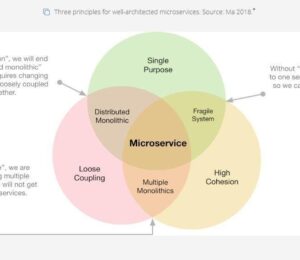SQL Best Practices Every Java Engineer Must Know
- October 01, 2024
- 15864 Unique Views
- 8 min read
- 2. Avoid Using SELECT *
- 3. Use Proper Joins
- 4. Use WHERE Clauses to Filter Data
- 5. Limit the Number of Rows Returned
- 6. Use EXISTS Instead of IN
- 7. Avoid Functions in WHERE Clauses
- 8. Use JOINs Instead of Subqueries
- 9. Optimize Group By and Order By Clauses
- 10. Use Appropriate Data Types
- 11. Analyze Query Execution Plans
- 12. Use Connection Pooling
- 13. Use Batch Processing
- 14. Optimize Joins
- 15. Optimize Subqueries
- 16. Optimize Aggregations
- 17. Use Summary Columns
- 18. Use Materialized Views
- 19. Monitor and Tune Database Settings
- 20. Regularly Review and Refactor SQL Code
- Summary
In the world of software development, best practices for SQL optimization are a critical skill that every Java engineer must master. Efficient database interactions can significantly enhance the performance of your applications, leading to faster response times and a better user experience.
This comprehensive guide dives into the best practices for SQL query optimization, tailored specifically for Java engineers. From understanding the importance of indexes to mastering joins and leveraging connection pooling, this article covers all the essential techniques you need to write efficient and performant SQL queries and best practices for SQL.
<h3>1. Use Indexes
Indexes can significantly improve query performance by allowing the database to quickly locate and access the data.
Tips:
- Create indexes on columns used in
WHERE,JOIN,ORDER BY, andGROUP BYclauses. - Use covering indexes to include all columns needed by a query.
⛔ Avoid Practice:
SELECT * FROM users WHERE email = '[email protected]';
🟢 Good Practice:
CREATE INDEX idx_users_email ON users (email); SELECT name, email FROM users WHERE email = '[email protected]';
This creates an index on the email column of the users table, speeding up searches based on email.
Leverage Function-Based Indexes
Function-based indexes can significantly improve query performance when you frequently search or sort by the result of a function or expression.
Tips:
- Create function-based indexes for frequently used expressions in WHERE, ORDER BY, or JOIN conditions.
- Use function-based indexes to optimize queries that involve case-insensitive searches or date/time manipulations.
⛔ Avoid Practice:
-- no function-based index applied. SELECT * FROM employees WHERE UPPER(last_name) = 'SMITH';
🟢 Good Practice:
CREATE INDEX idx_upper_last_name ON employees (UPPER(last_name)); SELECT * FROM employees WHERE UPPER(last_name) = 'SMITH';
This creates a function-based index on the uppercase version of the last_name column, speeding up case-insensitive searches.
In PostgreSQL, these are called expression indexes. Here's an example:
CREATE INDEX idx_lower_email ON users (LOWER(email)); SELECT * FROM users WHERE LOWER(email) = '[email protected]';
This creates an expression index on the lowercase version of the email column, optimizing case-insensitive email searches.
Function-based or expression indexes are handy when:
- You frequently search on transformed column values (e.g., UPPER, LOWER, substring operations).
- It would help if you index computed values or expressions.
- You want to optimize queries involving date/time manipulations.
Remember that function-based indexes can significantly improve query performance but also increase storage requirements and slow down data modification operations. Use them judiciously based on your specific query patterns and performance needs.
2. Avoid Using SELECT *
Using SELECT * retrieves all columns from the table, which can be inefficient and lead to unnecessary data transfer.
Tips:
- Specify only the columns you need in your
SELECTstatement.
⛔ Avoid Practice:
SELECT * FROM users;
🟢 Good Practice:
SELECT name, email FROM users;
This query retrieves only the name and email columns, reducing the amount of data transferred.
3. Use Proper Joins
Improper joins can lead to performance issues. Use the correct type of join for your query.
Tips:
- Use
INNER JOINfor matching rows in both tables. - Use
LEFT JOINto include all rows from the left table and matching rows from the right table.
⛔ Avoid Practice:
SELECT u.name, o.order_date FROM users u, orders o WHERE u.id = o.user_id;
🟢 Good Practice:
SELECT u.name, o.order_date FROM users u JOIN orders o ON u.id = o.user_id;
This query uses an INNER JOIN to combine data from the users and orders tables.
4. Use WHERE Clauses to Filter Data
Filtering data as early as possible in your query can help reduce the amount of data processed.
Tips:
- Use
WHEREclauses to filter data efficiently.
⛔ Avoid Practice:
SELECT name, email FROM users;
🟢 Good Practice:
SELECT name, email FROM users WHERE active = true;
This query retrieves only active users, reducing the amount of data processed.
5. Limit the Number of Rows Returned
When you don't need all rows, use the LIMIT clause to restrict the number of rows returned.
Tips:
- Use the
LIMITclause to fetch a subset of rows.
⛔ Avoid Practice:
SELECT name, email FROM users WHERE active = true;
🟢 Good Practice:
SELECT name, email FROM users WHERE active = true LIMIT 10;
This query retrieves the first 10 active users, reducing the amount of data processed and transferred.
6. Use EXISTS Instead of IN
Using EXISTS can be more efficient than using IN, especially for large datasets.
Tips:
- Use
EXISTSfor subqueries to check for the existence of rows.
7. Avoid Functions in WHERE Clauses
Using functions in `WHERE` clauses can prevent the use of indexes, leading to slower queries.
Tips:
- Avoid using functions on indexed columns in `WHERE` clauses.
⛔ Avoid Practice:
SELECT name, email FROM users WHERE DATE_PART('year', created_at) = 2023;
🟢 Good Practice:
SELECT name, email FROM users WHERE created_at >= '2023-01-01' AND created_at < '2024-01-01';
This query filters on the `created_at` column without using a function, allowing the use of an index.
8. Use JOINs Instead of Subqueries
JOINs are often more efficient than subqueries, especially for large datasets.
Tips:
- Use `JOIN` instead of subqueries when possible.
⛔ Avoid Practice:
SELECT name, ( -- Subquery to get order date for each user SELECT order_date FROM orders WHERE user_id = users.id ) AS order_date FROM users;
🟢 Good Practice:
SELECT u.name, o.order_date FROM users u JOIN orders o ON u.id = o.user_id;
This query uses a `JOIN` instead of a subquery, improving performance.
9. Optimize Group By and Order By Clauses
Using `GROUP BY` and `ORDER BY` clauses can be resource-intensive. Optimize them to improve performance.
Tips:
- Use indexes on columns used in `GROUP BY` and `ORDER BY` clauses.
- Reduce the number of columns specified in these clauses.
⛔ Avoid Practice:
SELECT user_id, COUNT(*), MAX(order_date) FROM orders GROUP BY user_id, order_date ORDER BY order_date;
🟢 Good Practice:
SELECT user_id, COUNT(*) FROM orders GROUP BY user_id ORDER BY user_id;
This query groups and orders by indexed columns, improving performance.
10. Use Appropriate Data Types
Choosing the correct data types for your columns can significantly impact performance and storage efficiency.
Tips:
- Use appropriate data types for your columns.
- Avoid using `TEXT` or `BLOB` unless necessary.
⛔ Avoid Practice:
-- Using TEXT for name and email which may be inefficient CREATE TABLE users ( id SERIAL PRIMARY KEY, name TEXT, email TEXT, created_at TIMESTAMP );
🟢 Good Practice:
-- Using more appropriate data types for better performance and storage efficiency CREATE TABLE users ( id SERIAL PRIMARY KEY, name VARCHAR 100, email VARCHAR 100, created_at TIMESTAMP );
This schema uses appropriate data types, improving performance and storage efficiency.
11. Analyze Query Execution Plans
Use tools like `EXPLAIN` to analyze your query execution plans and identify performance issues.
Tips:
- Use `EXPLAIN` to understand how your queries are executed.
- Identify and optimize slow parts of your queries.
⛔ Avoid Practice:
SELECT name, email FROM users WHERE active = true;
🟢 Good Practice:
EXPLAIN SELECT name, email FROM users WHERE active = true;
This command provides an execution plan for the query, helping identify potential performance issues.
12. Use Connection Pooling
For Java applications, using connection pooling can reduce the overhead of establishing database connections and improve performance.
Tips:
- Use a connection pooling library like HikariCP or Apache DBCP.
- Configure the pool size based on your application's needs and the database's capabilities.
⛔ Avoid Practice:
Connection conn = DriverManager.getConnection("jdbc:mysql://localhost:3306/mydatabase", "user", "password");
// Use connection here
conn.close();
🟢 Good Practice:
HikariConfig config = new HikariConfig();
config.setJdbcUrl("jdbc:mysql://localhost:3306/mydatabase");
config.setUsername("user");
config.setPassword("password");
config.setMaximumPoolSize(10);
HikariDataSource dataSource = new HikariDataSource(config);
This sets up a connection pool with a maximum of 10 connections, reducing connection overhead.
13. Use Batch Processing
Using batch processing can significantly improve performance when performing multiple insert, update, or delete operations.
Tips:
- Batch inserts/updates to reduce database round-trips.
- Use prepared statements for batch operations.
⛔ Avoid Practice:
Connection conn = dataSource.getConnection();
Statement stmt = conn.createStatement();
for (User user : userList) {
stmt.executeUpdate("INSERT INTO users (name, email) VALUES ('" + user.getName() + "', '" + user.getEmail() + "')");
}
stmt.close();
conn.close();
🟢 Good Practice:
Connection conn = dataSource.getConnection();
PreparedStatement pstmt = conn.prepareStatement("INSERT INTO users (name, email) VALUES (?, ?)");
for (User user : userList) {
pstmt.setString(1,
user.getName());
pstmt.setString(2,
user.getEmail());
pstmt.addBatch();
}
pstmt.executeBatch();
pstmt.close();
conn.close();
This Java code uses batch processing to insert multiple users efficiently.
14. Optimize Joins
Properly optimizing joins can significantly impact query performance, especially for large datasets.
Tips:
- Ensure that columns used in join conditions are indexed.
- Start with the smallest table when joining multiple tables.
⛔ Avoid Practice:
SELECT u.name, o.order_date FROM orders o JOIN users u ON u.id = o.user_id WHERE u.active = true;
🟢 Good Practice:
SELECT u.name, o.order_date FROM users u JOIN orders o ON u.id = o.user_id WHERE u.active = true;
This query joins the `users` table with the `orders` table on an indexed column, improving performance.
15. Optimize Subqueries
Subqueries can often be replaced with joins or other more efficient query constructs.
Tips:
- Use joins instead of subqueries whenever possible.
- Use Common Table Expressions (CTEs) for complex queries to improve readability and sometimes performance.
⛔ Avoid Practice:
SELECT name, email FROM users WHERE id IN SELECT user_id FROM orders WHERE order_date > '2023-01-01';
🟢 Good Practice:
WITH RecentOrders AS SELECT user_id FROM orders WHERE order_date > '2023-01-01' SELECT u.name, u.email FROM users u JOIN RecentOrders ro ON u.id = ro.user_id;
This query uses a CTE to improve readability and performance.
16. Optimize Aggregations
When performing aggregation queries, use efficient techniques to minimize the computational load. Tips:
- Ensure columns used in `GROUP BY` clauses are indexed.
- Consider using summary tables for frequently aggregated data.
⛔ Avoid Practice:
SELECT user_id, COUNT(*) AS order_count, SUM(amount) AS total_amount FROM orders GROUP BY user_id, order_date;
🟢 Good Practice:
SELECT user_id, COUNT(*) AS order_count FROM orders GROUP BY user_id;
This query is grouped by the `user_id` column, which should be indexed for optimal performance.
17. Use Summary Columns
Summary columns store pre-computed aggregate values, reducing the need for expensive computations during query execution. Tips:
- Use summary columns to store frequently queried aggregate data.
⛔ Avoid Practice:
SELECT user_id, SUM(amount) AS total_amount FROM orders GROUP BY user_id;
🟢 Good Practice:
ALTER TABLE users ADD total_order_amount DECIMAL(10, 2); UPDATE users u SET total_order_amount = (SELECT SUM(amount) FROM orders o WHERE o.user_id = u.id);
This approach adds a summary column to store the total order amount for each user.
18. Use Materialized Views
Materialized views cache the results of complex queries, improving performance for read-heavy operations. Tips:
- Use materialized views to store the results of expensive queries.
⛔ Avoid Practice:
SELECT user_id, COUNT(*) AS order_count, SUM(amount) AS total_amount FROM orders GROUP BY user_id;
🟢 Good Practice:
CREATE MATERIALIZED VIEW user_order_summary AS SELECT user_id, COUNT(*) AS order_count, SUM(amount) AS total_amount FROM orders GROUP BY user_id;
This creates a materialized view that stores the pre-computed summary of user orders.
19. Monitor and Tune Database Settings
Regularly monitor and tune your database settings to ensure optimal performance. Tips:
- Adjust memory settings like buffer pool size and cache size based on your workload.
- Use tools like `EXPLAIN`, `ANALYZE`, and database-specific monitoring tools to identify and address performance bottlenecks.
⛔ Avoid Practice:
-- Default settings not tuned for workload
🟢 Good Practice:
-- according to PostgreSQL, adjusting the shared_buffers: -- If you have a dedicated database server with 1GB or more of RAM, a reasonable starting value for shared_buffers is 25% of the memory in your system. ALTER SYSTEM SET shared_buffers = '2GB';
This command adjusts the buffer pool size in PostgreSQL, which can improve performance for read-heavy workloads.
Refer to the docs: https://www.postgresql.org/docs/9.1/runtime-config-resource.html
20. Regularly Review and Refactor SQL Code
Regularly reviewing and refactoring your SQL code can help identify and address performance issues. Tips:
- Conduct regular code reviews to ensure SQL queries are optimized.
- Break down complex queries into simpler, more efficient parts.
⛔ Avoid Practice:
-- Original complex query SELECT u.name, (SELECT COUNT(*) FROM orders o WHERE o.user_id = u.id) AS order_count FROM users u;
🟢 Good Practice:
-- Refactored for better performance SELECT u.name, COUNT(o.id) AS order_count FROM users u LEFT JOIN orders o ON u.id = o.user_id GROUP BY u.name;
The refactored query joins `users` and `orders` and uses a `GROUP BY` clause, improving performance.
For more best practices guide download my free book here: https://abosaadmuaath.activehosted.com/f/1
Summary
Optimizing SQL queries is essential for modern software development, particularly for Java engineers who work with relational databases. By adhering to best practices such as utilizing indexes, avoiding SELECT *, mastering joins, and optimizing WHERE clauses, you can guarantee efficient queries, shorten load times, and enhance overall application performance. In addition, incorporating connection pooling and selecting the appropriate data types can significantly improve database interactions. Consistently reviewing and refining SQL code, as well as analyzing execution plans is key to maintaining optimal queries and upholding high-performance standards.
Don’t Forget to Share This Post!










Comments (4)
alex
1 year agoDImension tables are much better for date filtering (especially years). That is, have a table that has every date in it + columns that have the "calendar year" "calendar month" "calendar quarter" etc. So if you're filtering on a year, you don't do > or < you do an Inner Join on the lu.DimDate table on [created_at] = [dimDate.date] and calendarYear = '2023' Inner Join filtering is significantly faster than "where" (order of operations for the query engine, you're significantly reducing the dataset earlier in the process) And, the = on the "calendarYear" is significantly faster than ranges
Bartek
1 year agoIn my opinion, the advice to use joins instead of subqueries whenever possible is not good. I had many cases where a query with many joins was much worse than a query with subqueries. A good piece of advice would be: always check your query with explain, because sometimes a query with subqueries can be much more efficient than a query with joins.
Juan Farizo
1 year agoI agree with @Bartek, not always is the best to avoid subqueries instead of joins. If we are talking about performance, the premise has to be measuring the throughput and the resources used on the sql server side.
Cristian
1 year agoThe advice about using VARCHAR 100 instead of TEXT is bad. You should reverse the advice to recommend using TEXT instead of VARCHAR, always, at least for Postgres: * VARCHAR and TEXT have the same exact performance in Postgres * VARCHAR 100 will be slightly **less** performant than TEXT, since it needs to enforce the maximum length * adding artificial maximum lengths is very likely to cause application bugs. Your example has 2 bugs: (1) you don't allow people with full names more than 100 characters, but there are such persons in the world - are they not allowed to use your application? (2) according to RFC3696, emails are allowed to be have up to 320 characters, but you're limiting it to 100.